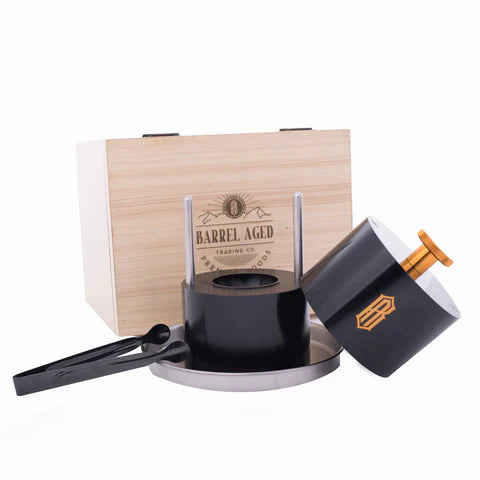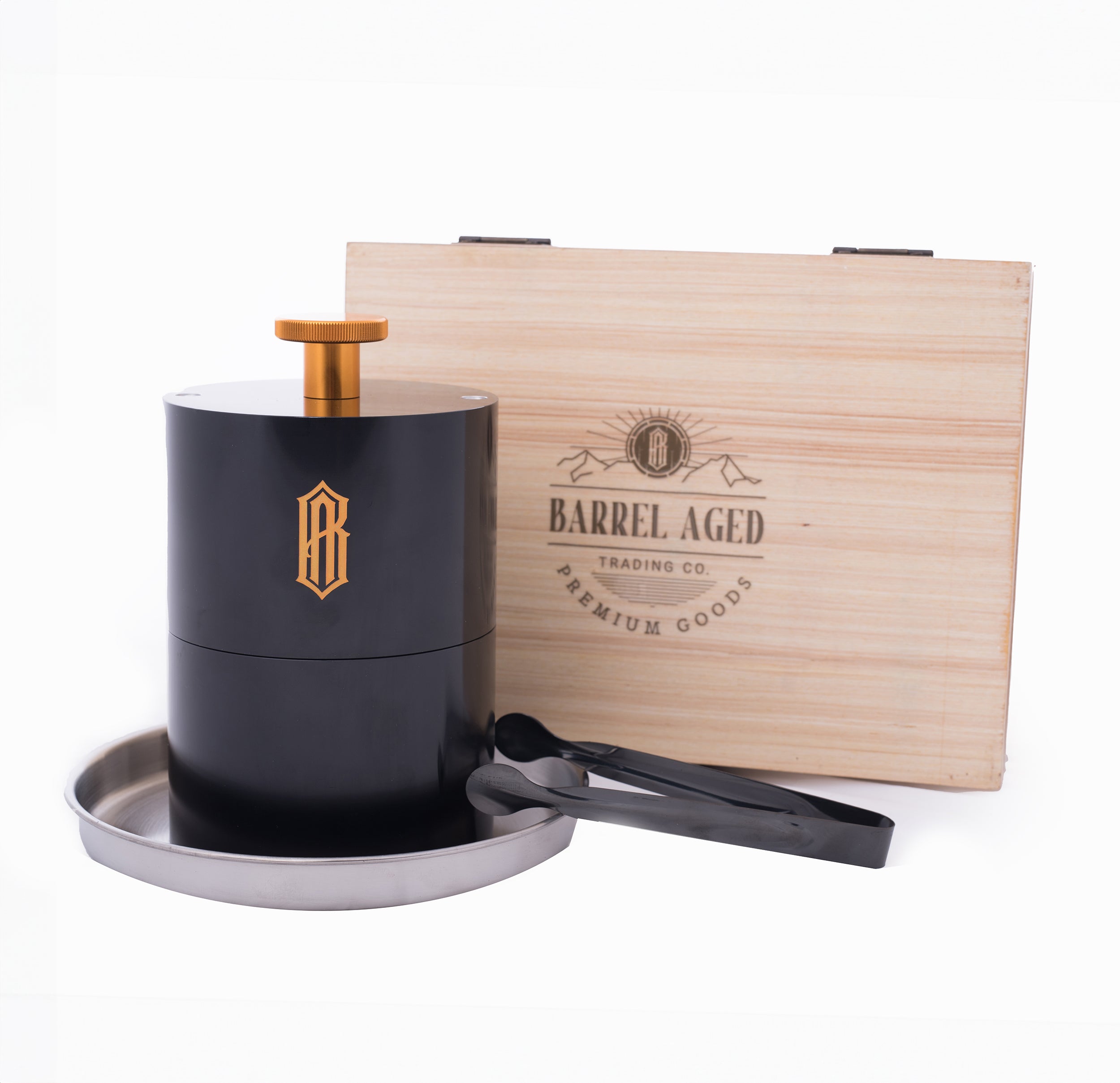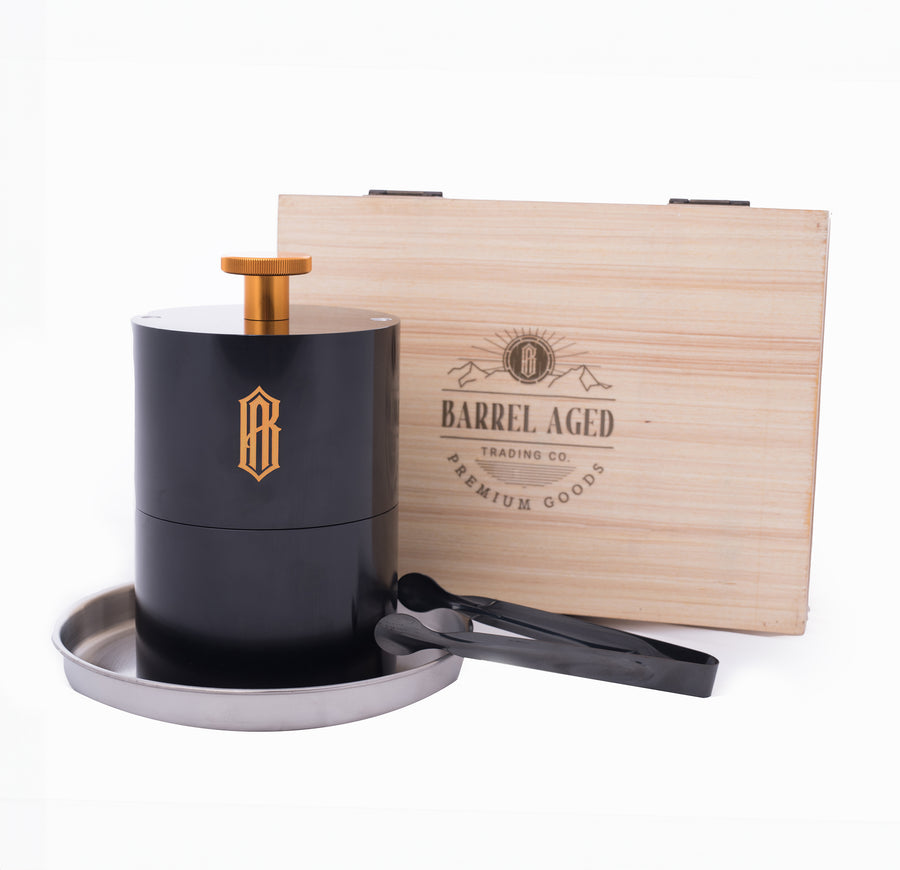
Creative Ways to Use Ice in the Kitchen
Ice cubes aren't just for cooling drinks; they have countless creative uses in cooking and baking. As the temperatures rise, knowing these clever ice cube ideas can help you in the kitchen and keep your summer cool. At Crafted Barware, we provide tools that make ice not just functional but also an aesthetic part of your kitchen. Let’s explore the many ways you can use ice beyond cocktails.
The Importance of Ice in Cooking
Ice plays a key role in cooking, from chilling ingredients to creating perfect textures. Knowing how to use ice cubes effectively can elevate your dishes and streamline your cooking process.
Ice in Cooking
Chilling and Preserving Ingredients
- Seafood Freshness: Keep seafood fresh by storing it on a bed of ice. The cold temperature maintains the quality and safety of the seafood until you're ready to cook.
- Ice Baths for Vegetables: After blanching vegetables, an ice bath stops the cooking process, preserving color, texture, and nutrients. Place the vegetables in a bowl filled with ice cubes and water immediately after boiling.
- Ingredient Storage: During preparation, store perishable items like dairy and meats on ice to keep them fresh and safe from bacteria.
Creating Perfect Textures
- Dumplings and Meatballs: Adding ice to the mixture creates a tender texture. The ice melts during cooking, leaving behind pockets of steam that make the dish light and airy.
- Fluffy Eggs: For scrambled eggs or omelets, a touch of ice in the mixture can make them fluffier. The ice melts quickly, creating steam that puffs up the eggs.
- Pastry Dough: Using ice-cold water in pastry dough helps keep fats solid, resulting in a flaky crust. Combine ice cubes with water, then measure out the chilled water for your dough. This is repeated below.
Enhanced Cooking Techniques
- Blanching: Blanch vegetables then immediately cool them in an ice bath. This technique helps retain the bright colors and crisp texture.
- Stir-Frying: Use a few ice cubes to control heat and prevent overcooking. Add ice cubes to the wok briefly to lower the temperature, then remove them before they melt completely.
Ice in Baking
Achieving Ideal Dough Consistency
- Pie and Pastry Dough: Use ice water to mix your dough. This keeps the fats from melting during preparation, ensuring a flaky texture.
- Cold Butter: Keep butter and other ingredients cold using ice baths or placing them in the freezer for a few minutes. Cold ingredients help achieve the desired dough consistency.
Innovative Baking Techniques
- Steaming Bread: Place a pan with ice cubes in the oven to create steam, which helps develop a crisp crust on bread.
- Cold Proofing: Create a cold environment for proofing dough using ice. This slows down the fermentation process, allowing for better flavor development.
Creative Desserts
- Ice Cream: Use dry ice or liquid nitrogen to make ice cream quickly. The rapid freezing process results in a smoother texture.
- Frozen Treats: Make unique ice pops with infused flavors like herbs, flowers, or fruit. Freeze them in ice cube trays or molds for a fun, refreshing treat.
Ice for Presentation
Garnishing and Plating
- Edible Displays: Use ice to create stunning edible displays. Embed edible flowers, herbs, or fruits in ice cubes for a decorative touch.
- Fresh Garnishes: Keep garnishes crisp and fresh by storing them on ice until ready to use.
Serving and Display Techniques
- Seafood Platters: Serve seafood on ice to keep it chilled and visually appealing. Arrange ice cubes in a serving tray and place seafood on top.
- Ice Sculptures: Use ice molds to create decorative ice sculptures for food presentation. These can add an elegant touch to any dish.
Practical Tips for Using Ice in Cooking and Baking
Types of Ice and Their Uses
- Crushed Ice: Best for quick chilling and providing a refreshing texture in dishes like ceviche.
- Ice Cubes: Ideal for general use, from chilling drinks to cooling blanched vegetables.
- Ice Balls and Spheres: Great for slow-melting applications, perfect for whiskey, cocktails and mocktails..
Maintaining Ice Quality
- Store ice in a clean, dedicated container to prevent contamination.
- Use purified or boiled water to make ice cubes, ensuring they are clear and free of impurities.
Essential Tools
- Ice Baller Press: For perfect ice balls, ideal for both cocktails and mocktailss. Explore the Ice Baller Press.
- Crystal Clear Ice Cube Sphere Tray: Create perfect ice spheres for elegant presentations. Check out the Crystal Clear Ice Cube Sphere Tray.
- Large Clear Ice Cube Silicone Tray: Make large, clear ice cubes that melt slowly, ideal for keeping drinks and dishes cool without diluting them. Shop the Large Clear Ice Cube Silicone Tray.
Conclusion
Ice cubes are versatile tools in the kitchen, offering benefits far beyond cooling drinks. From preserving ingredients and enhancing textures to creating innovative desserts and elegant presentations, ice can elevate your culinary creations. With the right tools and techniques, you can unlock the full potential of ice in cooking and baking.
Share your own innovative uses for ice in cooking and baking. Explore our range of ice products at Crafted Barware to enhance your culinary skills today. Ice Baller Press, Crystal Clear Ice Cube Sphere Tray, Large Clear Ice Cube Silicone Tray.
Ice FAQs
Q: What are some creative ways to use ice cubes?
A: Some creative ways to use ice cubes include using them to infuse drinks,and even make edible flower ice cubes for garnishing beverages.
Q: How can I use ice cubes to make iced coffee?
A: To make iced coffee, brew a strong batch of coffee and let it cool. Pour the coffee into an ice cube tray and freeze it. When ready to serve, place the coffee ice cubes in a glass and pour milk or cream over them for a refreshing iced coffee.
Q: Can ice cubes be used for brunch recipes?
A: Yes, ice cubes can be used in brunch recipes to keep beverages cold without diluting them. You can also freeze juice or fruit puree in ice cube trays to add a flavorful twist to drinks.
Q: What are some ways to make fancy ice cubes?
A: You can make fancy ice cubes by freezing flowers, herbs, or fruits in ice cube trays filled with water. These decorative ice cubes can add a touch of elegance to drinks during special occasions or events.






